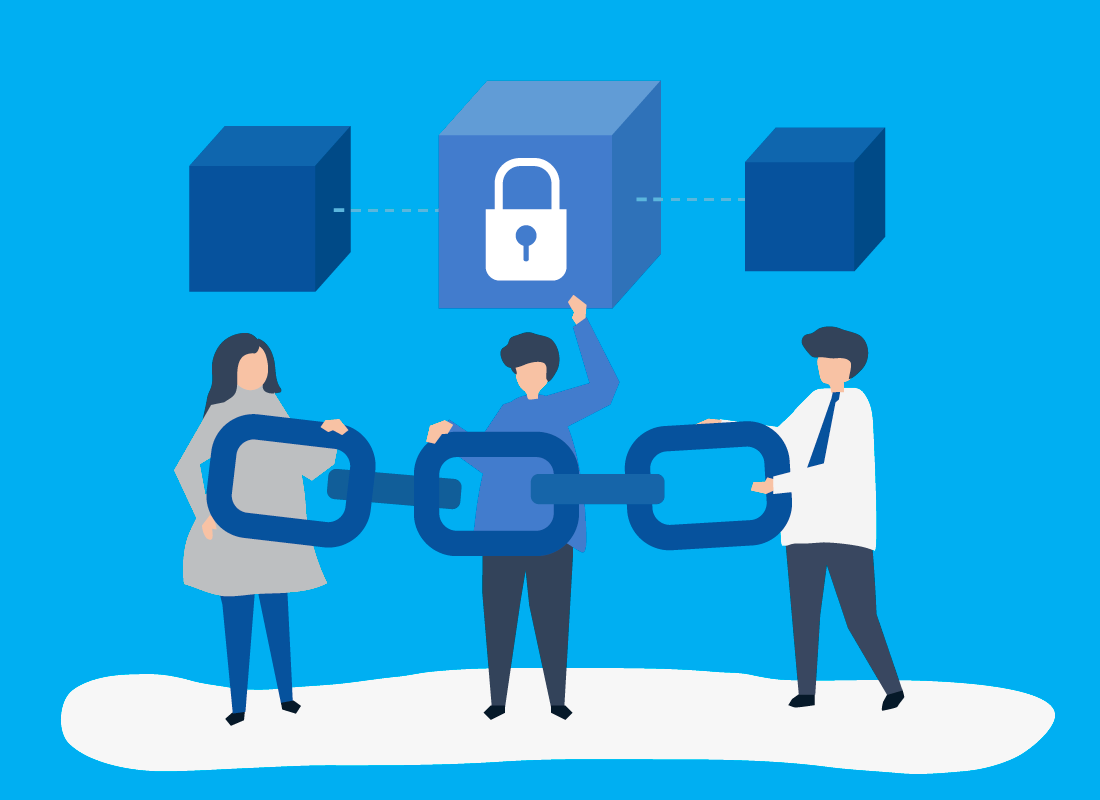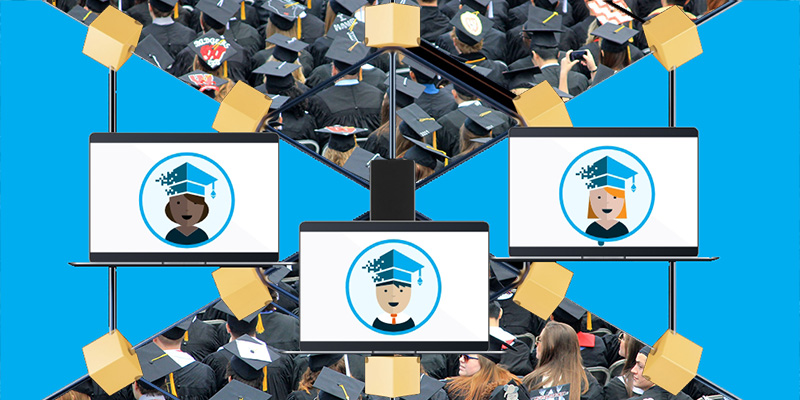Not only the education sector but also banking, insurance and many others sectors are increasingly using blockchain technology. Each of them shares common needs: they have a large amount of information to process, store, secure, and share. So many actions that are facilitated by the blockchain.
At this time of the digitization of many important processes in our society, how can we ensure the security of digital credentials? BCdiploma is here to explain how the blockchain guarantees the integrity of the credentials stored on it.
What is a blockchain?
The definition of a blockchain
A blockchain is a digital ecosystem for decentrally storing data. It allows a network of interconnected users to share and transmit data without going through any intermediary. As it does not need to rely on a central entity to guarantee its control, the blockchain is a intrinsically transparent tool that comes with benefits for all of its users.
What can a blockchain be used for?
A blockchain can not only be used to store, retrieve and validate data, but also to exchange stored values, which can be particularly useful in transactions of assets such as crypto-currencies. On the other hand, diplomas and certificates certified using blockchain technology are called digital credentials.
The blockchain ecosystem guarantees:
- Authenticity, since no data can be modified without the details being recorded on the blockchain itself.
- Reliability, since each user of the blockchain can verify the information contained by each block of data.
- Durability, since the blockchain system is not based on a particular operator, or on a predefined system, and can therefore be used by anyone with an internet browser.
How can we be assured of the security of digital credentials stored on the blockchain?
Encrypted and constantly verifiable data, all thanks to hashing

The very name of the blockchain comes from its structure: it is made up of blocks linked to one another and inseparable. Each block has its own digital signature, which makes it unique and recognizable: this is called the hash. The modifications made to the blockchain are grouped into a new block, which will contain the hash of the previous block. This connection implies a dependency of the new block on the previous one, and so on throughout the entire blockchain.
Thus, in the case of a block modification (for example, in an attempt to corrupt the chain), the information in the following blocks would no longer be consistent, and this throughout the entire chain. The modification of even the smallest portion of the data on a blockchain is therefore immediately detectable.
Digital credentials can be verified at any time
The reliability of the blockchain also comes from the various verification systems intrinsic to the ecosystem:
- Proof of work: with each addition of information, blockchain “miners” have to resolve a computationally intensive mathematical problem in order to validate the new block;
- Proof of stake: a consensus mechanism that allows transaction validators to prove that they are trustworthy enough to make changes to the blockchain. Such proof can only be obtained using an algorithm that obliges the validators to take on a significant stake of the native currency of the blockchain on which they are operating, compelling them to respect the consensus.
- Nodes: each user has a copy of the blockchain ledger, which is constantly synced in order to keep each of the copies totally compliant and up-to-date. This network of nodes allows both the blockchain to be decentralized and any anomaly in one or more blocks to be immediately identified.
It is the combination of these different verification systems that makes the blockchain a particularly reliable and secure tool. The digital credentials that are recorded there are therefore durable, inviolable, and totally reliable.
Issue your digital credentials with BCdiploma!
To create your digital credentials, secure them with blockchain certification, and then share them with other people, you can count on BCdiploma! We offer an easy-to-use system that allows companies, universities and training organizations to easily issue and manage their own digital credentials.
To learn more about digital credentials, the blockchain, and their respective uses, check out our site now.
